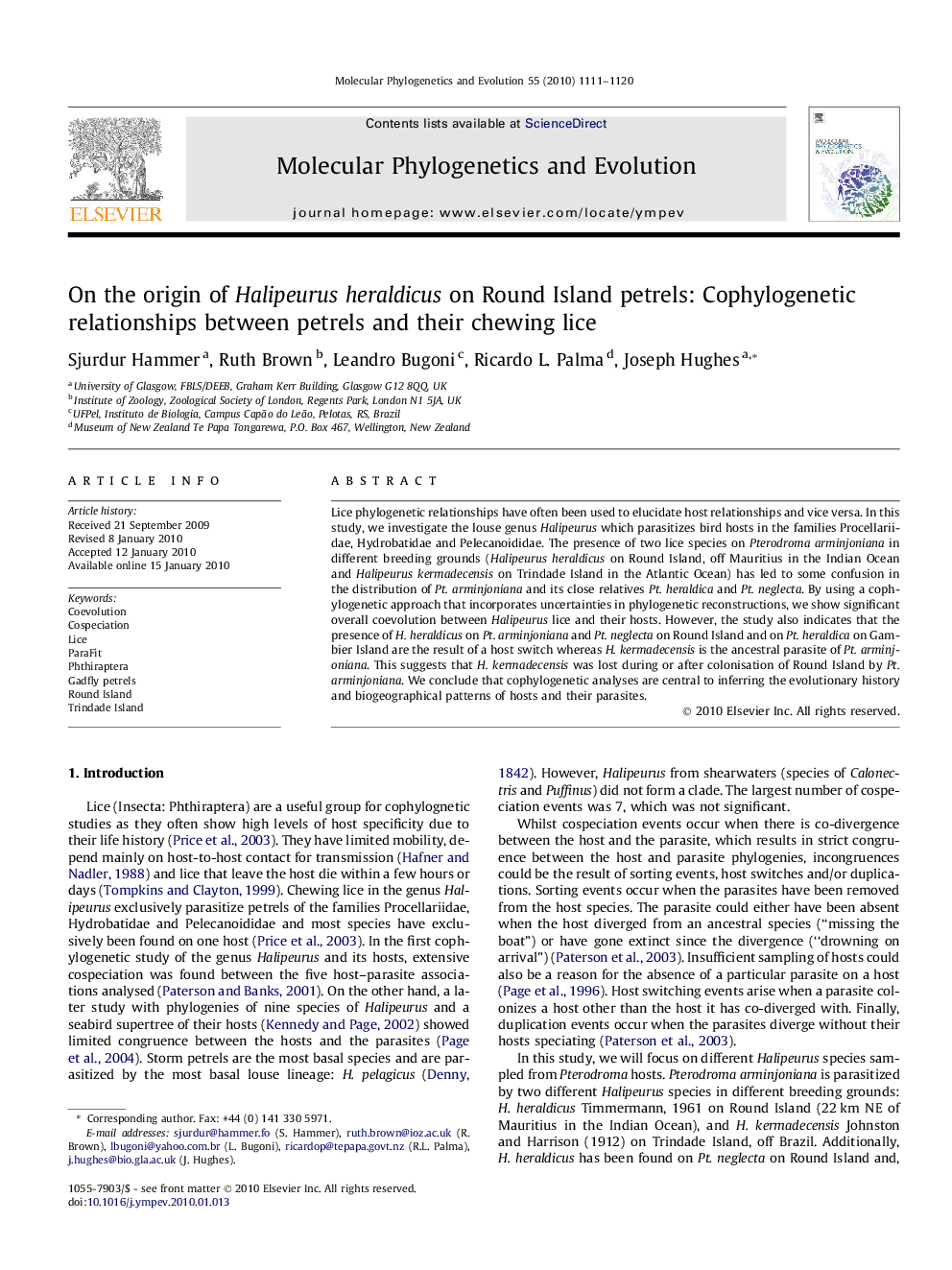| Article ID | Journal | Published Year | Pages | File Type |
|---|---|---|---|---|
| 2834683 | Molecular Phylogenetics and Evolution | 2010 | 10 Pages |
Lice phylogenetic relationships have often been used to elucidate host relationships and vice versa. In this study, we investigate the louse genus Halipeurus which parasitizes bird hosts in the families Procellariidae, Hydrobatidae and Pelecanoididae. The presence of two lice species on Pterodroma arminjoniana in different breeding grounds (Halipeurus heraldicus on Round Island, off Mauritius in the Indian Ocean and Halipeurus kermadecensis on Trindade Island in the Atlantic Ocean) has led to some confusion in the distribution of Pt. arminjoniana and its close relatives Pt. heraldica and Pt. neglecta. By using a cophylogenetic approach that incorporates uncertainties in phylogenetic reconstructions, we show significant overall coevolution between Halipeurus lice and their hosts. However, the study also indicates that the presence of H. heraldicus on Pt. arminjoniana and Pt. neglecta on Round Island and on Pt. heraldica on Gambier Island are the result of a host switch whereas H. kermadecensis is the ancestral parasite of Pt. arminjoniana. This suggests that H. kermadecensis was lost during or after colonisation of Round Island by Pt. arminjoniana. We conclude that cophylogenetic analyses are central to inferring the evolutionary history and biogeographical patterns of hosts and their parasites.
